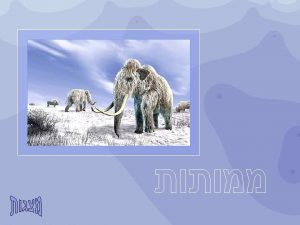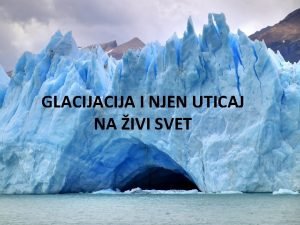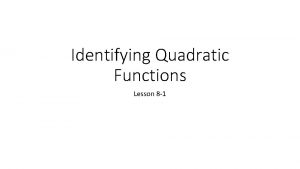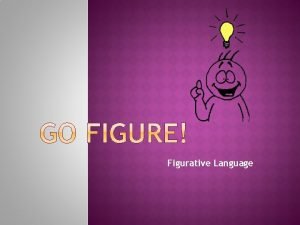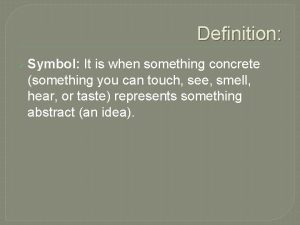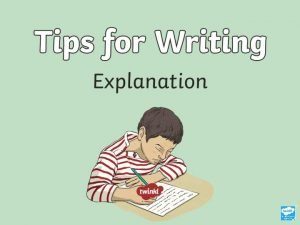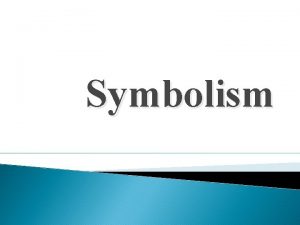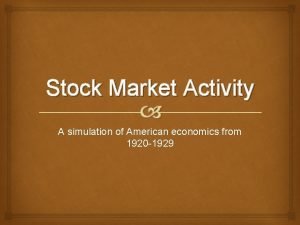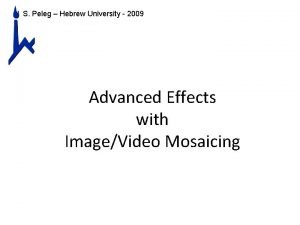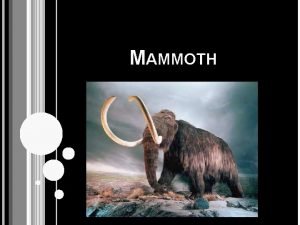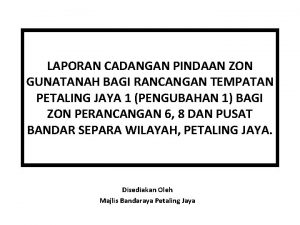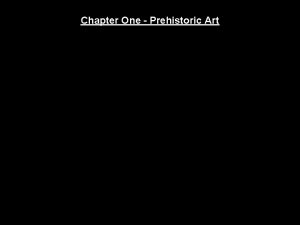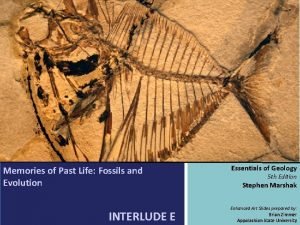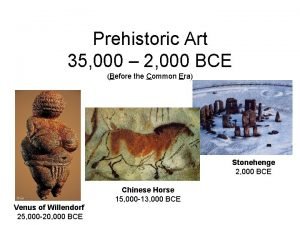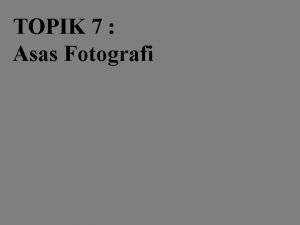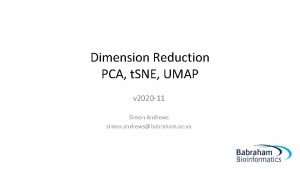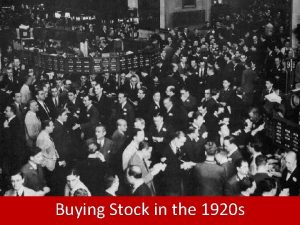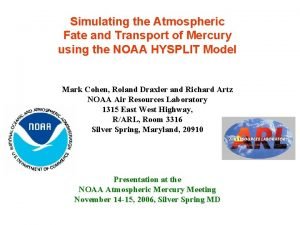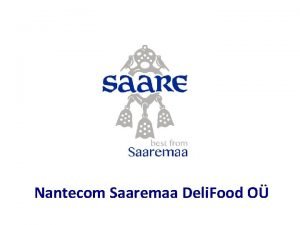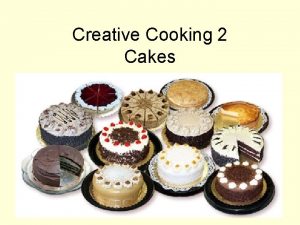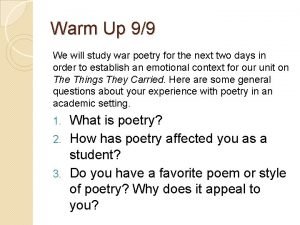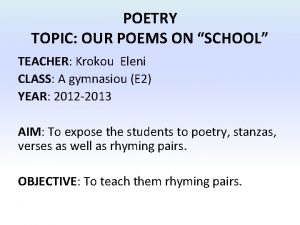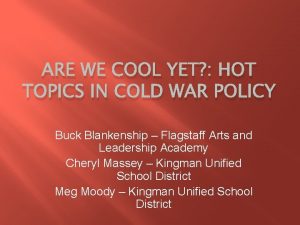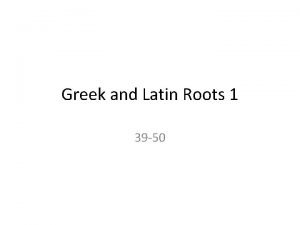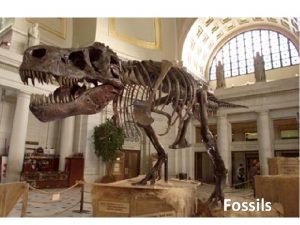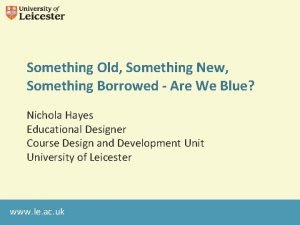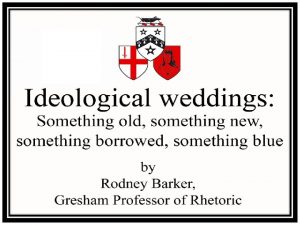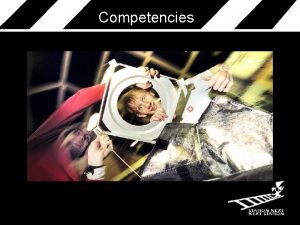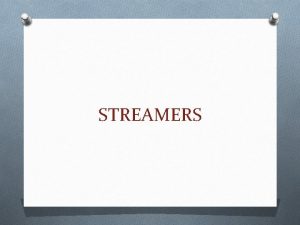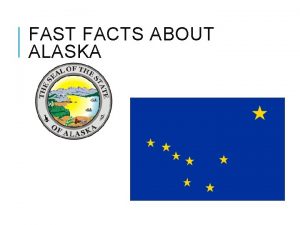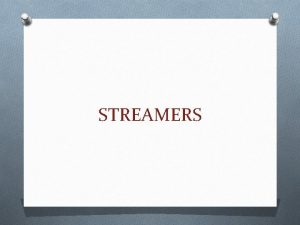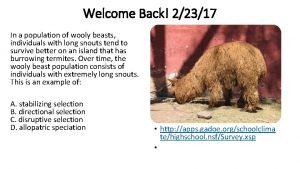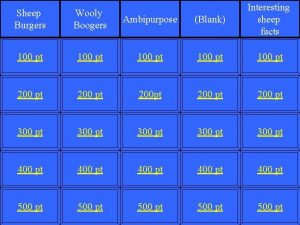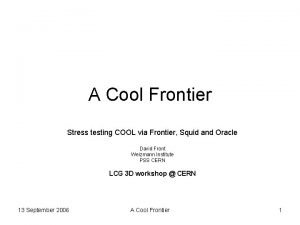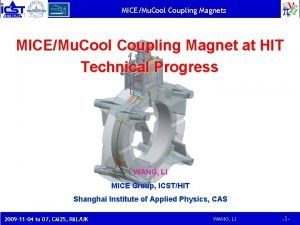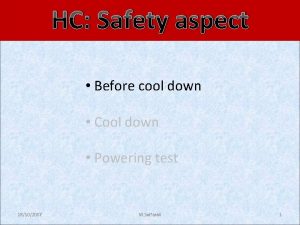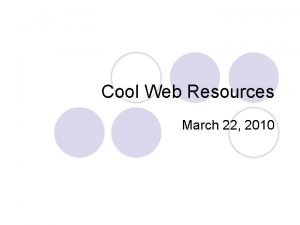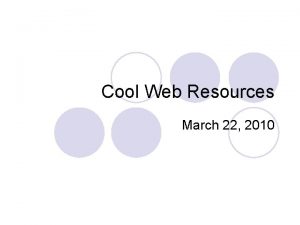CH 339 K SOMETHING COOL Wooly Mammoth Mammuthus





































- Slides: 37

CH 339 K SOMETHING COOL

Wooly Mammoth – Mammuthus primigenius • • Disappeared about 10, 000 BC Frozen remains found periodically Wooly mammoth hemoglobin reconstructed Campbell, K. L. et al. (2010) Nature Genetics Advance Online Publication

Structure • Asian elephant (left) and mammoth (right) deoxyhemoglobin with BPG (chimeric molecule) • Blue = location of mammoth mutations • Yellow = positive residues on b-chain

Typical hemoglobin Increasing temperature shifts binding to right Blood entering warm, exercising muscles unloads more O 2.

O 2 Binding Curves: Mammoth vs. Asian Elephant • • • Intrinsic O 2 affinity of mammoth Hb is 2 that of modern elephant In the presence of normal cofactors, the two are essentially identical Increased cofactor affinity, however, reduces temp effects on O 2 binding Mammoth Hb specialized to deliver O 2 to tissues whether cold or hot Same adaptation seen in reindeer, musk oxen

CH 339 K PHOTOSYNTHESIS

6 CO 2 + 6 O 2 ⇄ C 6 H 12 O 6 • Requires energy (big surprise) • Provided by radiation • 1017 kcal/year (1010 tons of carbohydrate produced - 2 tons/person)



Chloroplasts will reduce an artificial electron acceptor when illuminated Hill Reaction

Where h = 6. 626 x 10 -34 Jsec And n = frequency (NOT wavelength) For cyan-colored light, this works out to ~ 240 k. J/mol photons

Absorption of light • Internal conversion - electronic energy converted to heat, time frame < 10 -11 s • Fluorescence - excited state decays to ground state by emitting photon, time frame ~10 -8 s • Exciton transfer (resonance energy transfer) – excited molecule transfers its excitation energy to nearby unexcited molecules, important in funneling light energy to photosynthetic reaction centers • Photooxidation - light-excited donor molecule transfers an electron to an acceptor molecule, the oxidized donor relaxes to ground state by oxidizing some other molecule






Chlorophyll is assembled in light harvesting complexes Example shown contains Chlorophyll A (green) Chlorophyll B (red) Lutein (yellow) Chlorophylls and accessory pigments harvest incoming photons and are excited Energy is passed on through exciton transfer to a reaction center








Need 2 e- to reduce the quinone Pheo = pheophytin Q = quinone

Rhodospirillum action center 1) Excited chlorophyll passes electron to pheophytin 2) Electron then passed to menaquinone 3) Electron passed through Fe to ubiquinone QB 4) Cytochrome donates electron back to action center chlorophyll

Green sulfur bacteria also have a non-cyclic system that passes electrons through ferridoxin to NADPH Ferridoxin is an iron-sulfur protein Below is ferridoxin 1 from Azotobacter Contains one [4 Fe-4 S] cluster and one [3 Fe-4 S] cluster

Energetics

Need 2 ferredoxins Produces good reductant (Ch*) and strong oxidant (Z)


Organization of Photosystem 1

Cytochrome b 6 f Complex • • • Proton pump Transfers electrons to Plastocyanin (carrier to PS 1) As is complex 3 of ETC, electrons from QH 2 have to cycle through one at a time

Ubiquinone Plastoquinone

Cyclic Photophosphorylation To fix 1 CO 2 requires: 2 NADPH molecules 3 ATP molecules • Each molecule of oxygen released by the light reactions supplies the 4 electrons needed to make 2 NADPH molecules. • 4 electrons passingthrough cytochrome b 6/f complex provides enough energy to pump 12 protons into the interior of the thylakoid. • To make 3 molecules of ATP, the ATPase in chloroplasts needs about 14 protons (H+) Deficit is made up by cyclic photophosphorylation. • Electrons expelled by the energy of light absorbed by photosystem I pass, as normal, to ferredoxin (Fd). • Then pass to plastoquinone (PQ) and on back into the cytochrome b 6/f complex. • Here each electron liberates pumps 2 protons (H+) into the interior of the thylakoid — enough to make up the deficit left by noncyclic photophosphorylation.


Splitting Water e- source for PS II Complex associated with PS II uses several Mn ions to extract 4 electrons from 2 water molecules. P 680 is rereduced by Tyrosine in the PSII reaction center Tyrosine radical is rerreduced by increasing oxidation state of a Mn cluster When Mn cluster reaches +4 state, it can grab 4 e- from 2 HO
 Mammuthus africanavus
Mammuthus africanavus Quin quiere
Quin quiere Smilodon populator
Smilodon populator Lesson 8-1 identifying quadratic functions
Lesson 8-1 identifying quadratic functions Arcler desk
Arcler desk Smart is something you become not something you are
Smart is something you become not something you are Something old something new poem
Something old something new poem Literal vs figurative language worksheet
Literal vs figurative language worksheet Adjective language feature
Adjective language feature Concrete symbolism
Concrete symbolism Something concrete that stands for something abstract
Something concrete that stands for something abstract How something works example
How something works example Symbol/symbolism definition
Symbol/symbolism definition Mammoth tech jobs
Mammoth tech jobs Mammoth oil stock 1920
Mammoth oil stock 1920 Mammoth vs saber tooth tiger
Mammoth vs saber tooth tiger Mammoth camera
Mammoth camera Mammoth habitat description
Mammoth habitat description Rancangan tempatan petaling jaya
Rancangan tempatan petaling jaya Reconstruction drawing of mammoth-bone houses
Reconstruction drawing of mammoth-bone houses Copyright
Copyright Mammoth cave to louisville
Mammoth cave to louisville What era
What era Kamera mammoth
Kamera mammoth Umap vs tsne
Umap vs tsne Tel tone stock 1929
Tel tone stock 1929 Mammoth cave
Mammoth cave Deli cool
Deli cool Jesus is a cool dude song
Jesus is a cool dude song How do you cool an unshortened cake?
How do you cool an unshortened cake? We real cool figurative language
We real cool figurative language A poem about my school
A poem about my school Are we cool yet?
Are we cool yet? What is fat tom
What is fat tom Cool underground houses
Cool underground houses Promotions o'cool
Promotions o'cool Words with the root septem
Words with the root septem Pbis cool tools
Pbis cool tools
